
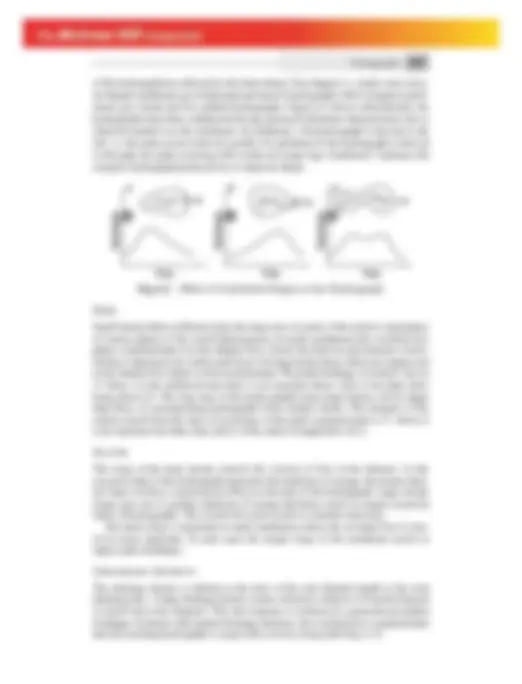
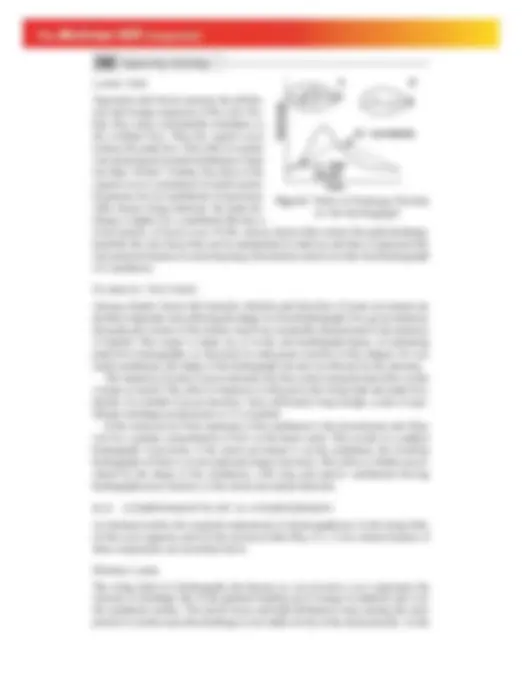
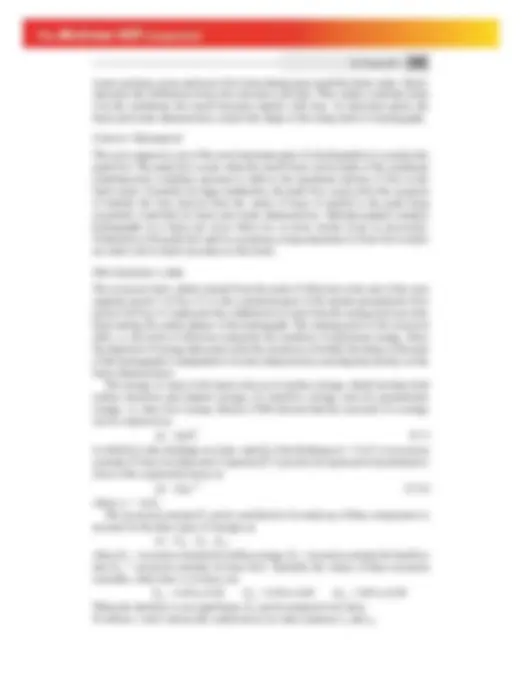
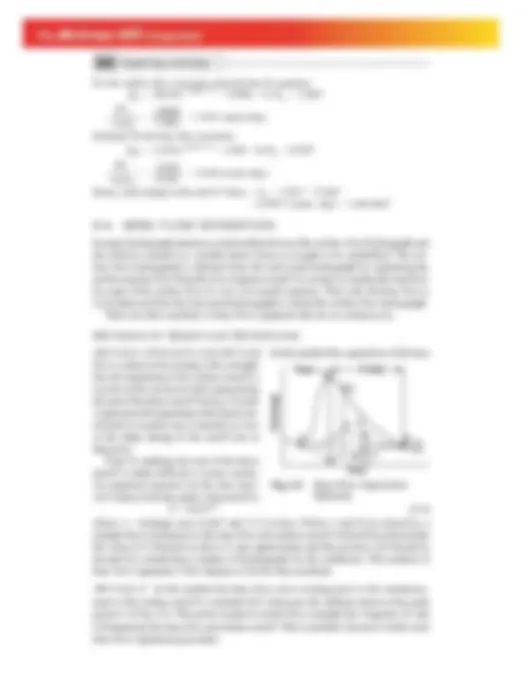
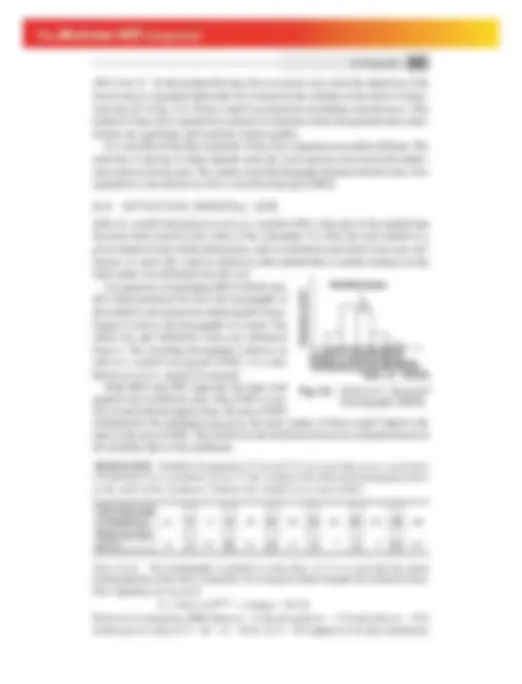
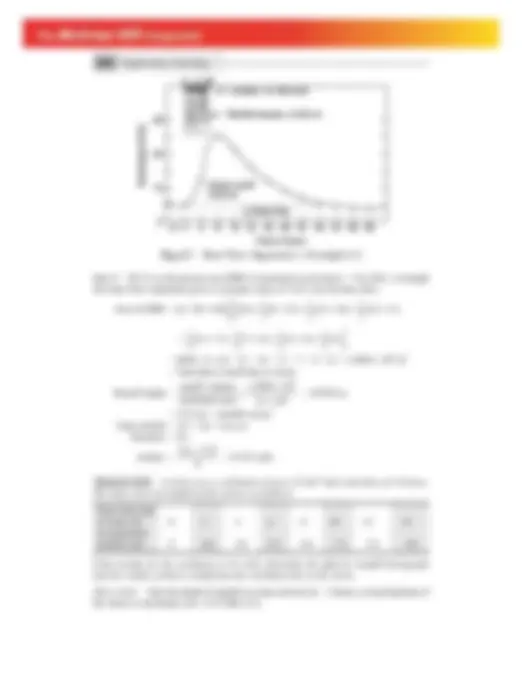
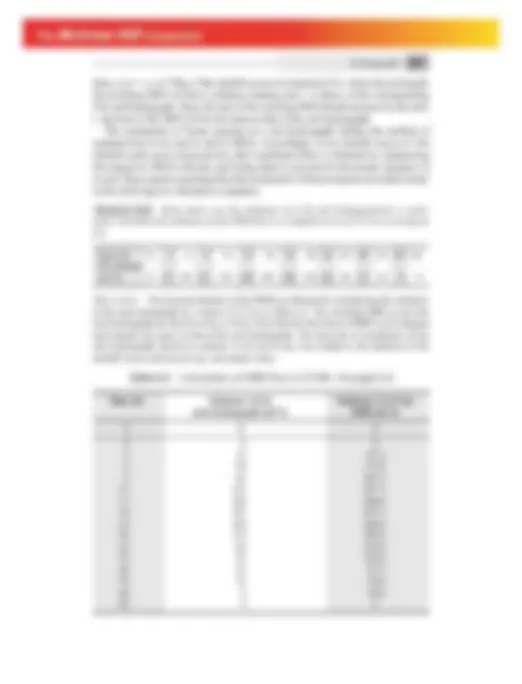
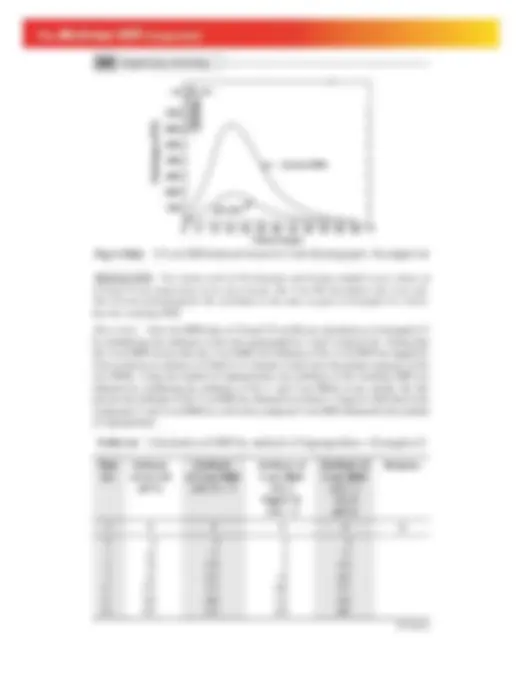
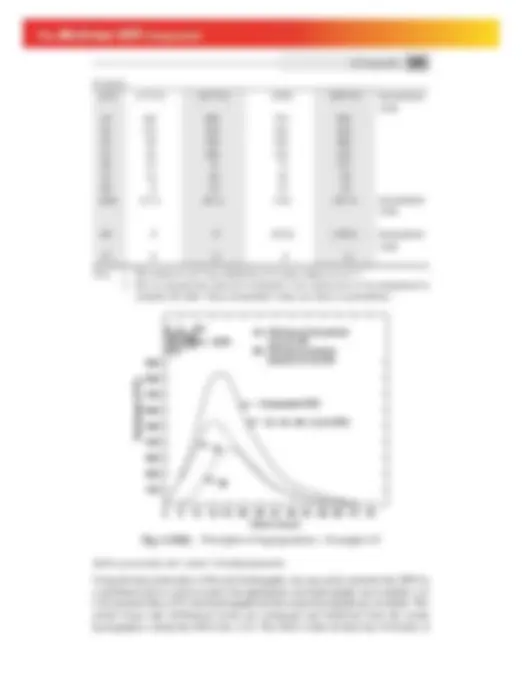
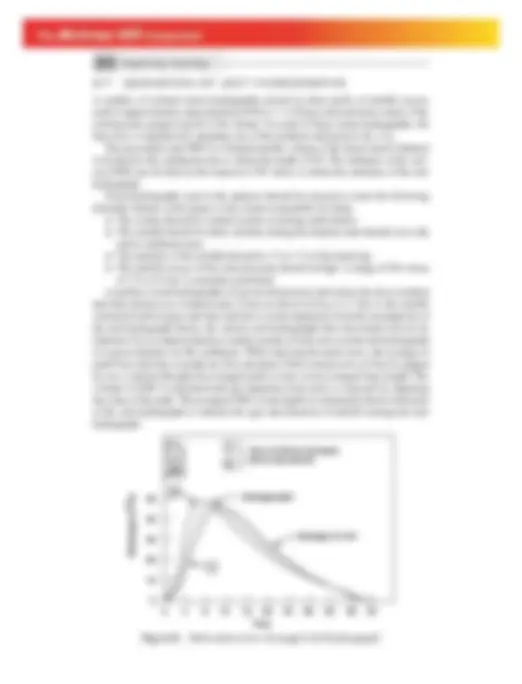
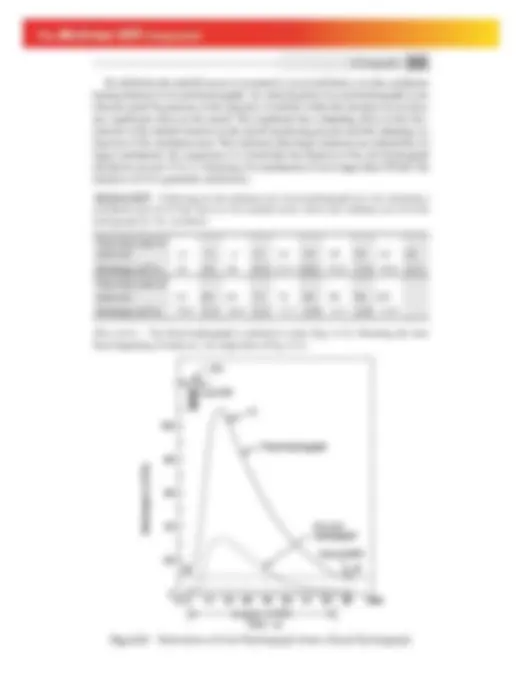
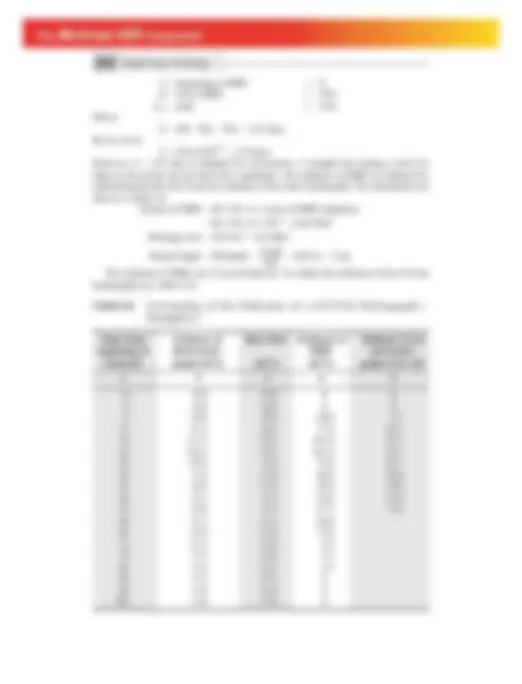
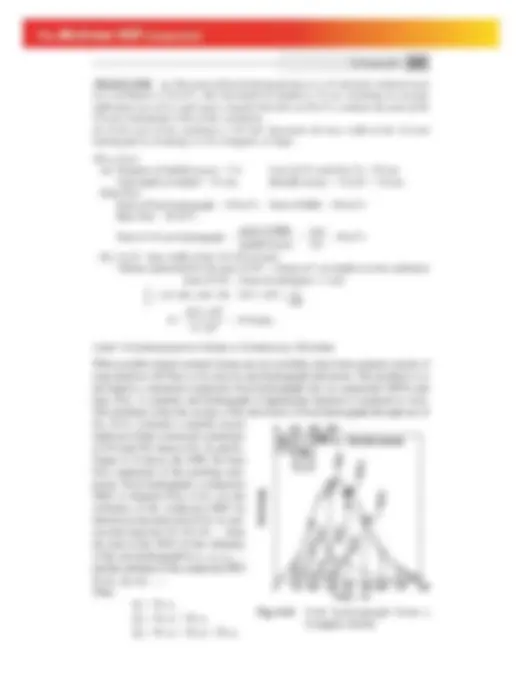

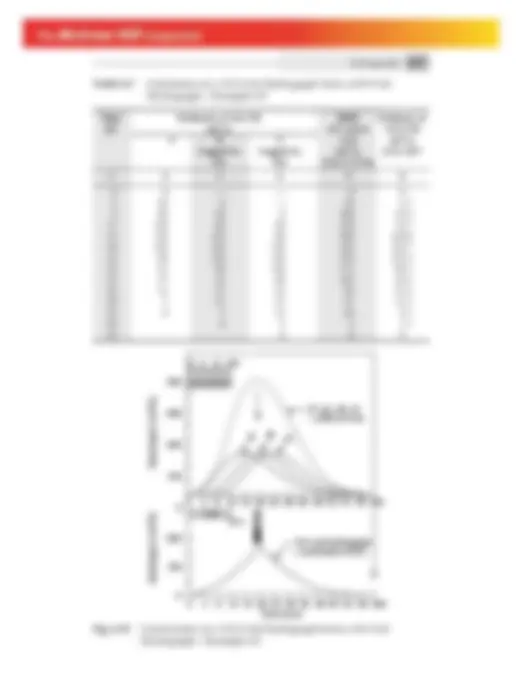
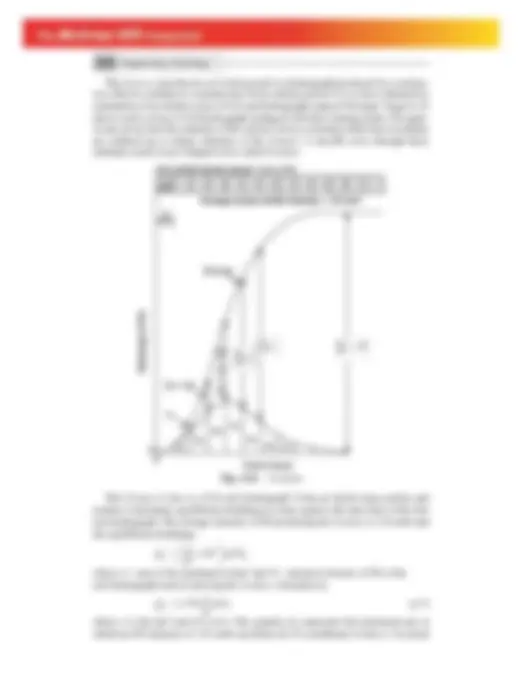
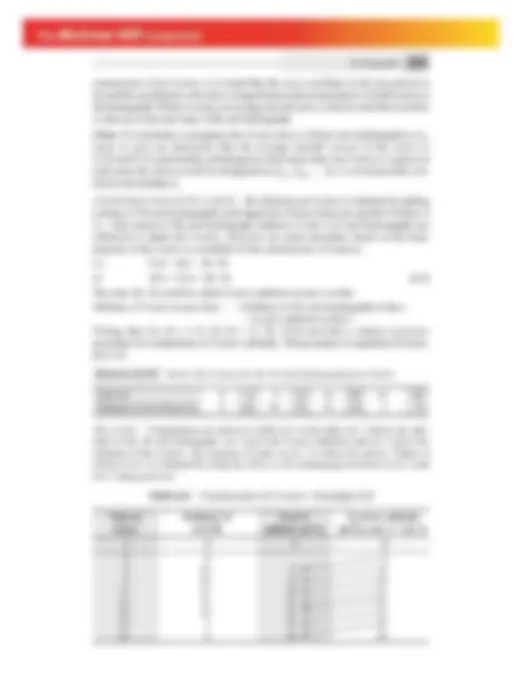
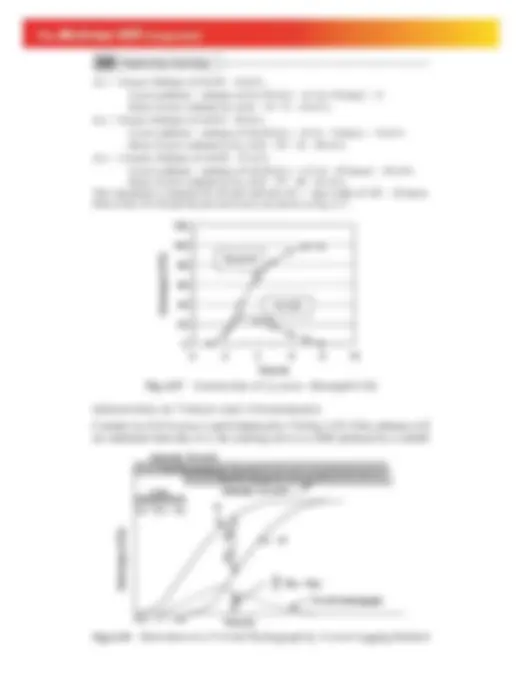
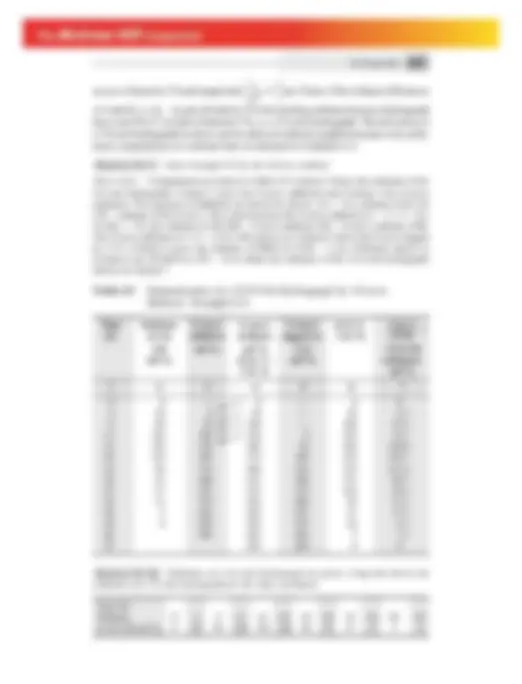
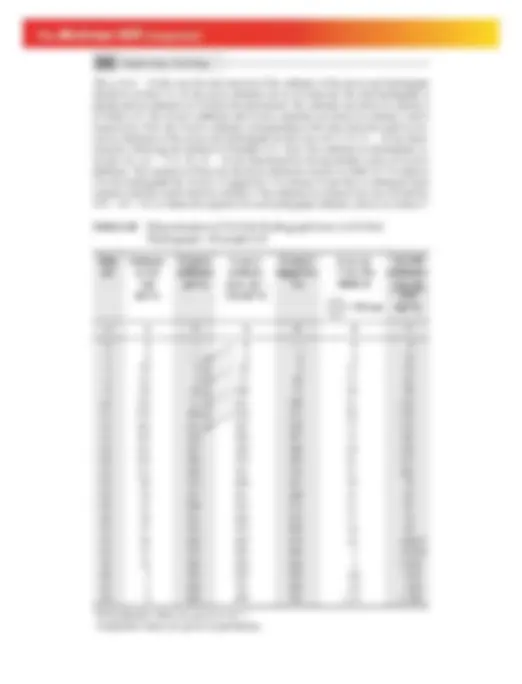

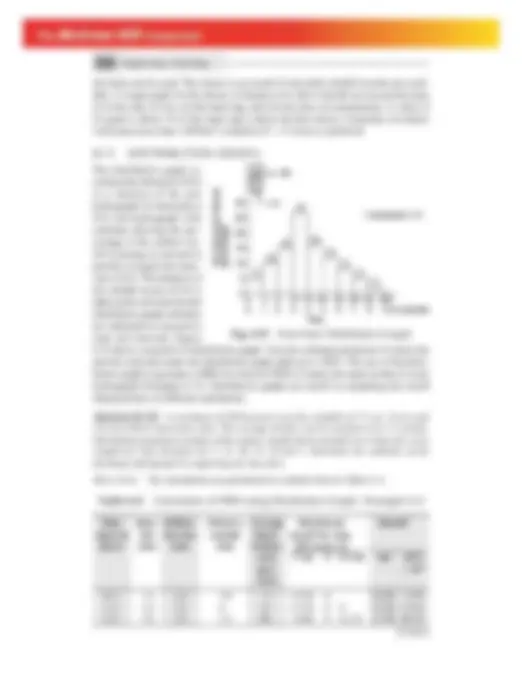
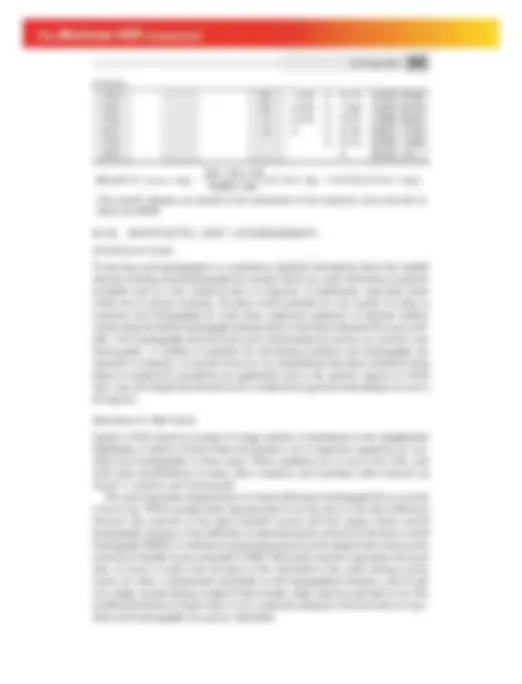
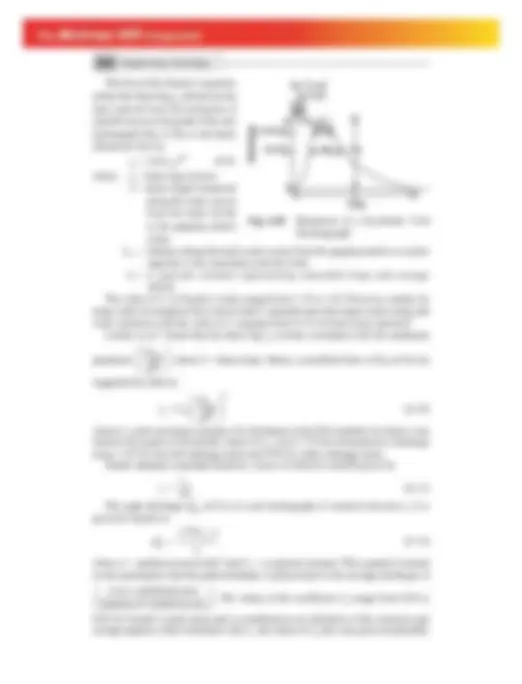
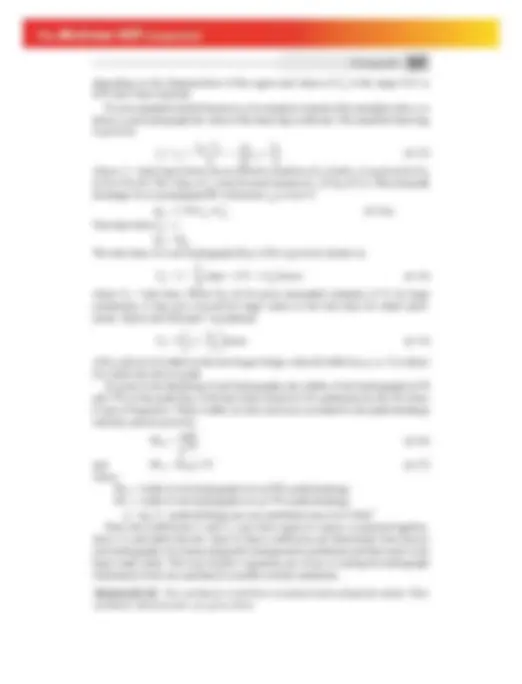
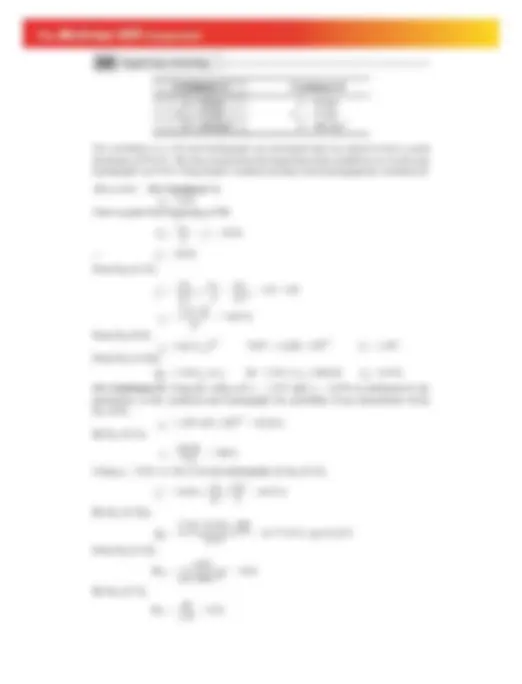
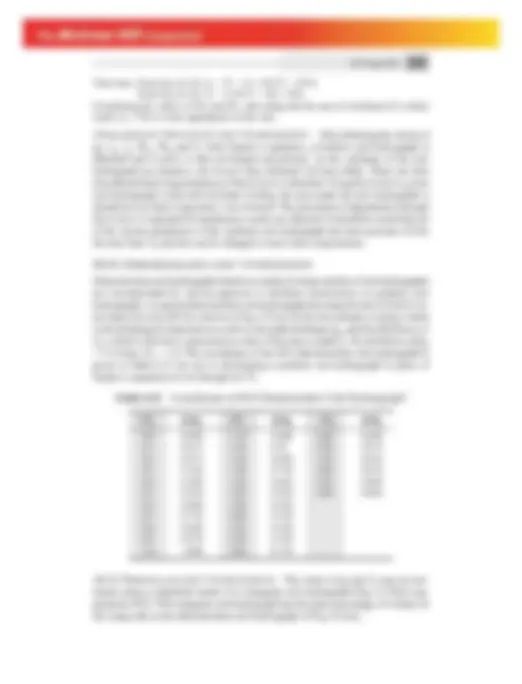
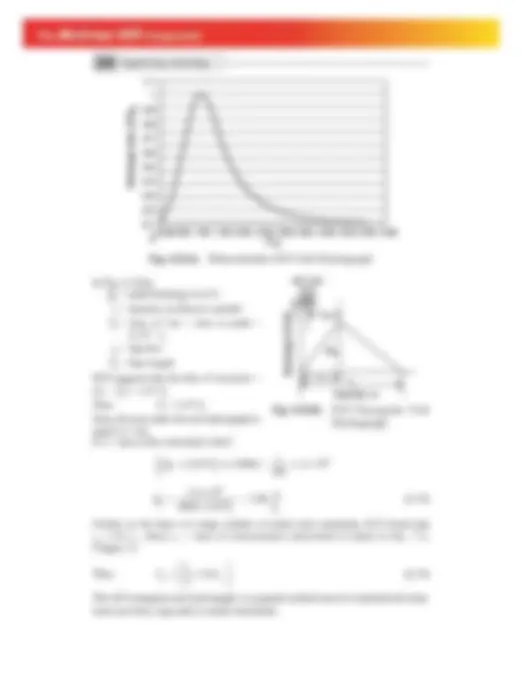
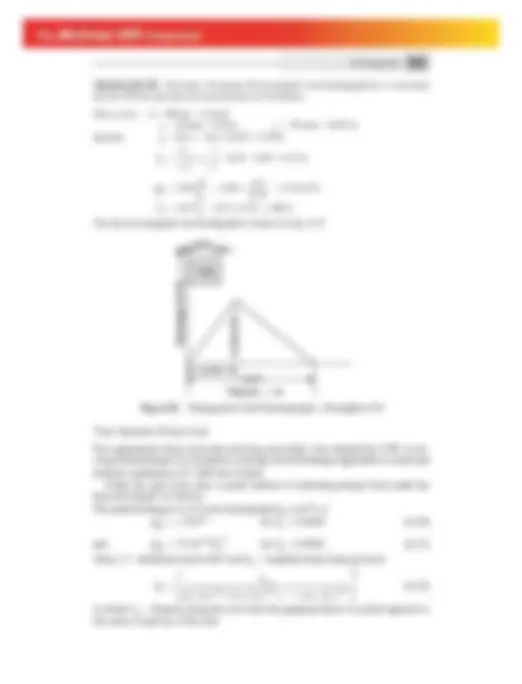
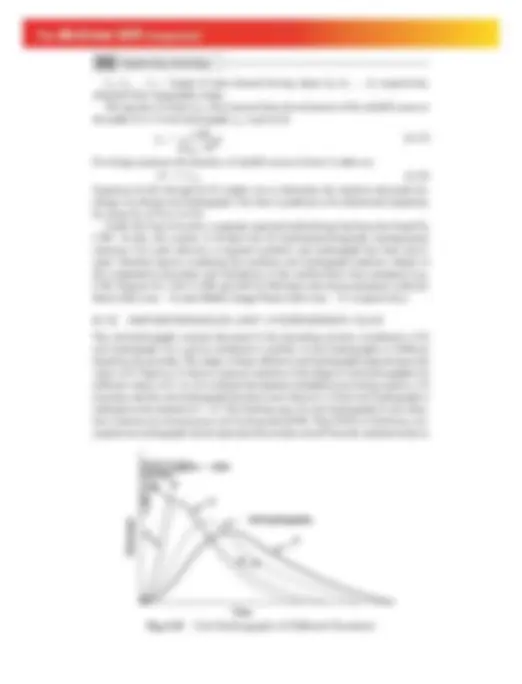
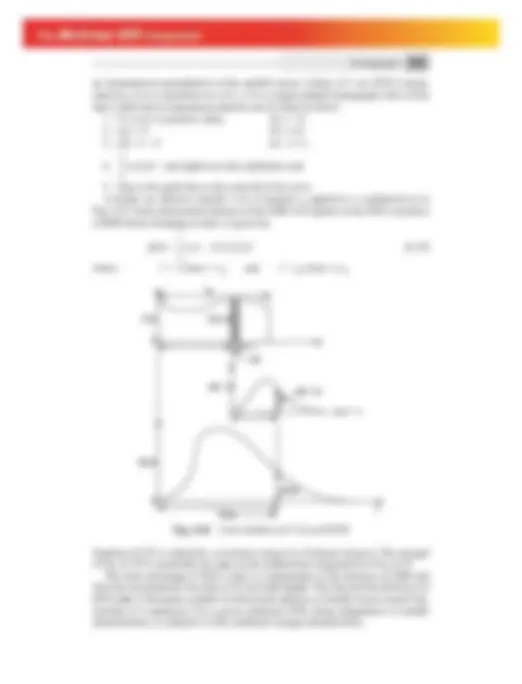
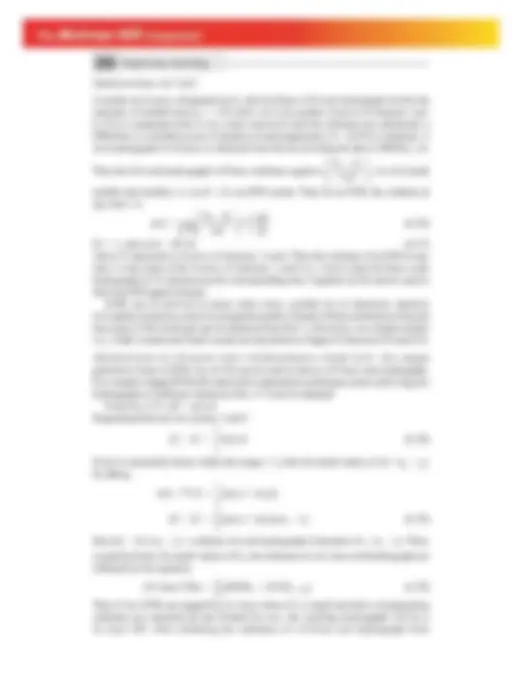
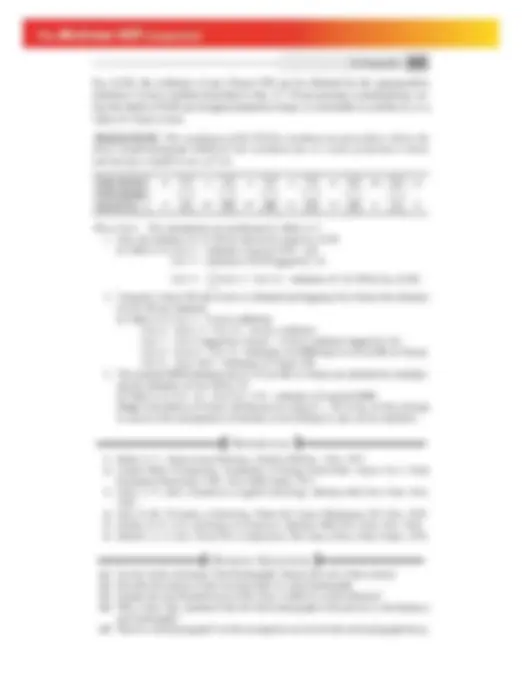
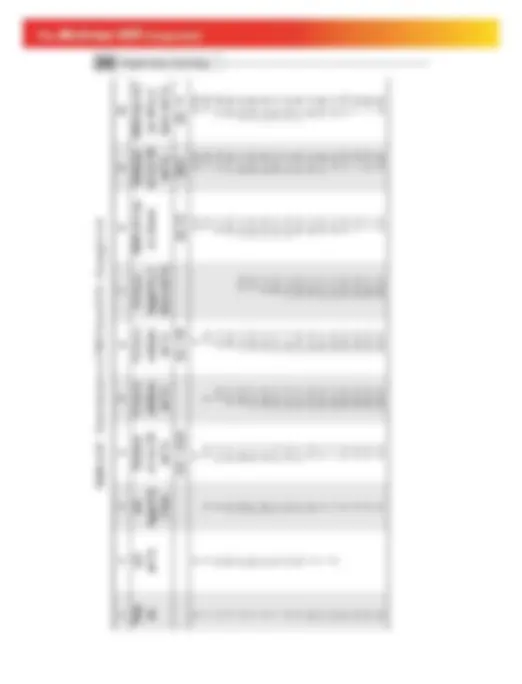
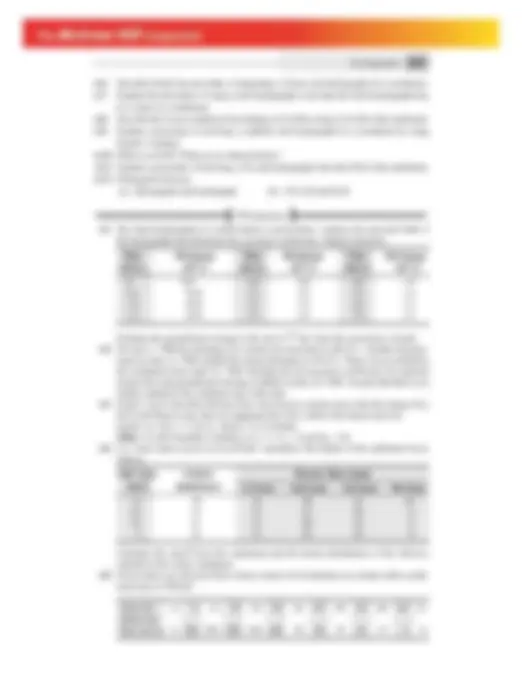
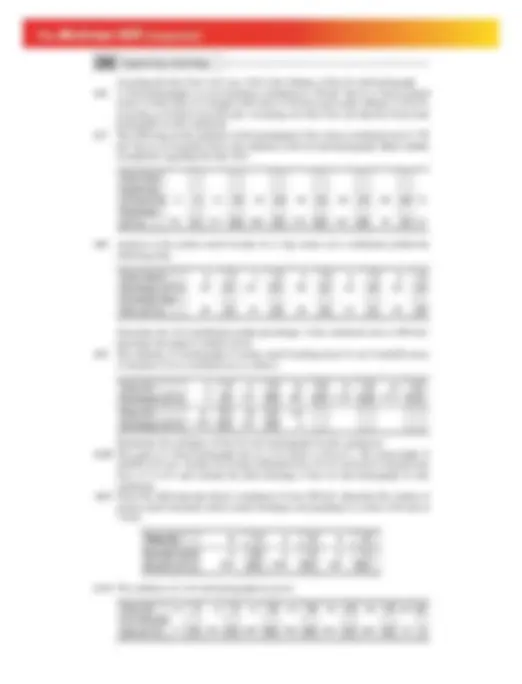
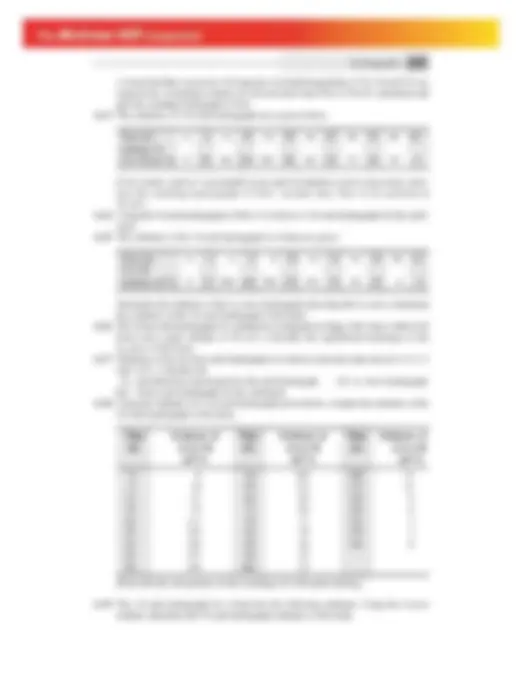
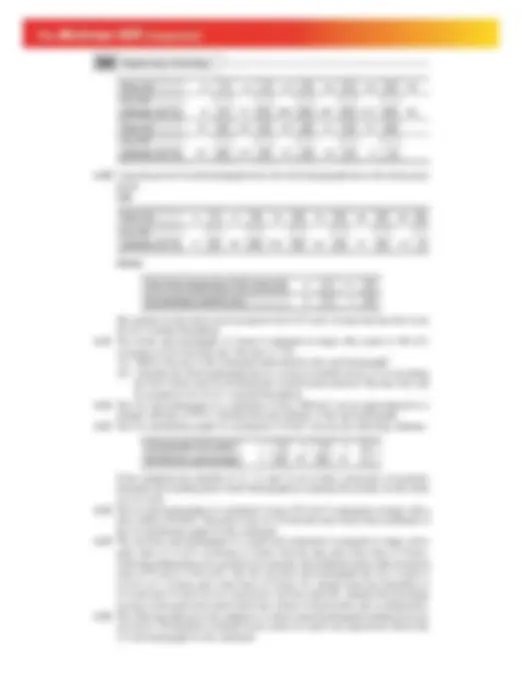
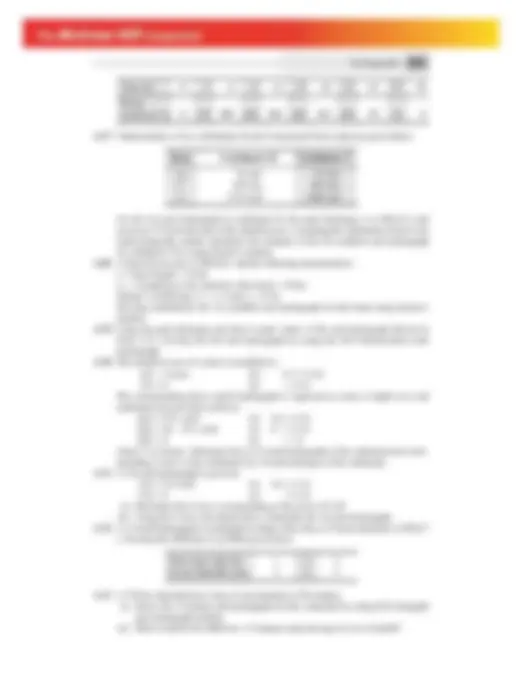
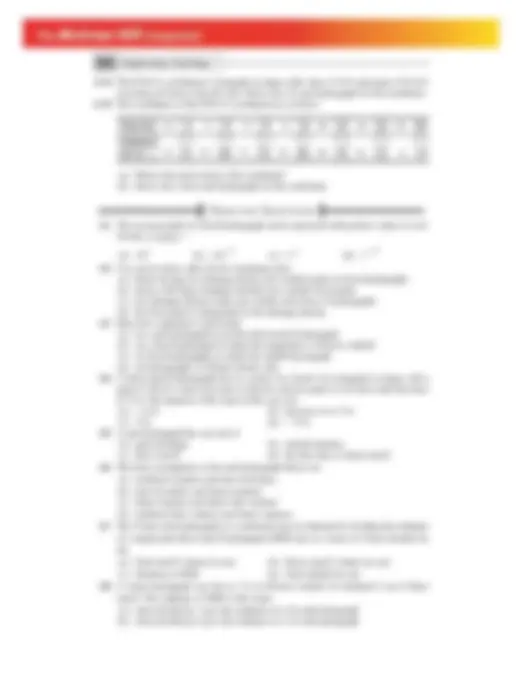
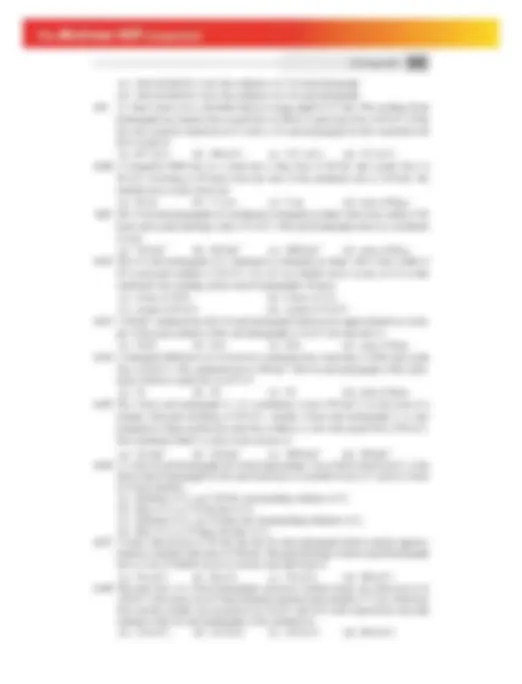
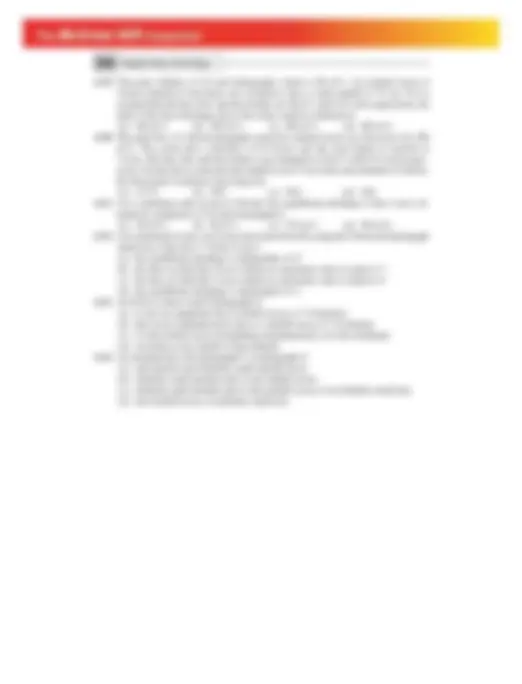
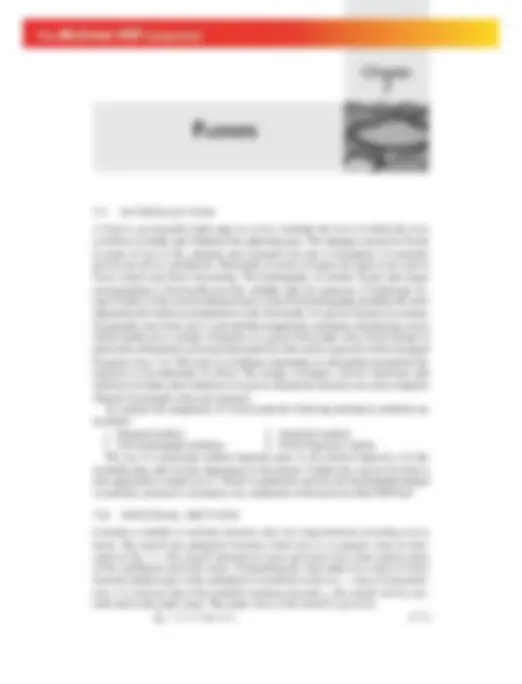


Study with the several resources on Docsity

Earn points by helping other students or get them with a premium plan


Prepare for your exams
Study with the several resources on Docsity

Earn points to download
Earn points by helping other students or get them with a premium plan
Community
Ask the community for help and clear up your study doubts
Discover the best universities in your country according to Docsity users
Free resources
Download our free guides on studying techniques, anxiety management strategies, and thesis advice from Docsity tutors
6.1 INTRODUCTION. While long-term runoff concerned with the estimation of yield was discussed in the previous chapter, the present chapter examines in ...
Typology: Schemes and Mind Maps
1 / 51

This page cannot be seen from the preview
Don't miss anything!












































While long-term runoff concerned with the estimation of yield was discussed in the previous chapter, the present chapter examines in detail the short-term runoff phe- nomenon. The storm hydrograph is the focal point of the present chapter. Consider a concentrated storm producing a fairly uniform rainfall of duration, D over a catchment. After the initial losses and infiltration losses are met, the rainfall excess reaches the stream through overland and channel flows. In the process of trans- lation a certain amount of storage is built up in the overland and channel-flow phases. This storage gradually depletes after the cessation of the rainfall. Thus there is a time lag between the occurrence of rainfall in the basin and the time when that water passes the gauging station at the basin outlet. The runoff measured at the stream-gauging station will give a typical hydrograph as shown in Fig. 6.1. The duration of the rainfall is also marked in this figure to indicate the time lag in the rainfall and runoff. The hydrograph of this kind which results due to an isolated storm is typically single- peaked skew distribution of discharge and is known variously as storm hydrograph, flood hydrograph or simply hydrograph. It has three characteristic regions: (i) the rising limb AB, joining point A, the starting point of the rising curve and point B, the point of inflection, (ii) the crest segment BC between the two points of inflection with a peak P in between, (iii) the falling limb or depletion curve CD starting from the second point of inflection C.
Fig. 6.1 Elements of a Flood Hydrograph
196 Engineering Hydrology
The hydrograph is the response of a given catchment to a rainfall input. It consists of flow in all the three phases of runoff, viz. surface runoff, interflow and base flow, and embodies in itself the integrated effects of a wide variety of catchment and rainfall parameters having complex interactions. Thus two different storms in a given catch- ment produce hydrographs differing from each other. Similarly, identical storms in two catchments produce hydrographs that are different. The interactions of various storms and catchments are in general extremely complex. If one examines the record of a large number of flood hydrographs of a stream, it will be found that many of them will have kinks, multiple peaks, etc. resulting in shapes much different from the sim- ple single-peaked hydrograph of Fig. 6.1. These complex hydrographs are the result of storm and catchment peculiarities and their complex interactions. While it is theo- retically possible to resolve a complex hydrograph into a set of simple hydrographs for purposes of hydrograph analysis, the requisite data of acceptable quality are sel- dom available. Hence, simple hydrographs resulting from isolated storms are pre- ferred for hydrograph studies.
The factors that affect the shape of the hydrograph can be broadly grouped into cli- matic factors and physiographic factors. Each of these two groups contains a host of factors and the important ones are listed in Table 6.1. Generally, the climatic factors control the rising limb and the recession limb is independent of storm characteristics, being determined by catchment characteristics only. Many of the factors listed in Ta- ble 6.1 are interdependent. Further, their effects are very varied and complicated. As such only important effects are listed below in qualitative terms only.
Table 6.1 Factors Affecting Flood Hydrograph
Physiographic factors Climatic factors
The shape of the basin influences the time taken for water from the remote parts of the catchment to arrive at the outlet. Thus the occurrence of the peak and hence the shape
198 Engineering Hydrology
Vegetation and forests increase the infiltra- tion and storage capacities of the soils. Fur- ther, they cause considerable retardance to the overland flow. Thus the vegetal cover reduces the peak flow. This effect is usually very pronounced in small catchments of area less than 150 km^2. Further, the effect of the vegetal cover is prominent in small storms. In general, for two catchments of equal area, other factors being identical, the peak dis- charge is higher for a catchment that has a lower density of forest cover. Of the various factors that control the peak discharge, probably the only factor that can be manipulated is land use and thus it represents the only practical means of exercising long-term natural control over the flood hydrograph of a catchment.
Among climatic factors the intensity, duration and direction of storm movement are the three important ones affecting the shape of a flood hydrograph. For a given duration, the peak and volume of the surface runoff are essentially proportional to the intensity of rainfall. This aspect is made use of in the unit hydrograph theory of estimating peak-flow hydrographs, as discussed in subsequent sections of this chapter. In very small catchments, the shape of the hydrograph can also be affected by the intensity. The duration of storm of given intensity also has a direct proportional effect on the volume of runoff. The effect of duration is reflected in the rising limb and peak flow. Ideally, if a rainfall of given intensity i lasts sufficiently long enough, a state of equi- librium discharge proportional to iA is reached. If the storm moves from upstream of the catchment to the downstream end, there will be a quicker concentration of flow at the basin outlet. This results in a peaked hydrograph. Conversely, if the storm movement is up the catchment, the resulting hydrograph will have a lower peak and longer time base. This effect is further accen- tuated by the shape of the catchment, with long and narrow catchments having hydrographs most sensitive to the storm-movement direction.
As indicated earlier, the essential components of a hydrograph are: (i) the rising limb, (ii) the crest segment, and (iii) the recession limb (Fig. 6.1). A few salient features of these components are described below.
The rising limb of a hydrograph, also known as concentration curve represents the increase in discharge due to the gradual building up of storage in channels and over the catchment surface. The initial losses and high infiltration losses during the early period of a storm cause the discharge to rise rather slowly in the initial periods. As the
Fig. 6.3 Role of Drainage Density on the Hydrograph
Hydrographs 199
storm continues, more and more flow from distant parts reach the basin outlet. Simul- taneously the infiltration losses also decrease with time. Thus under a uniform storm over the catchment, the runoff increases rapidly with time. As indicated earlier, the basin and storm characteristics control the shape of the rising limb of a hydrograph.
The crest segment is one of the most important parts of a hydrograph as it contains the peak flow. The peak flow occurs when the runoff from various parts of the catchment simultaneously contribute amounts to achieve the maximum amount of flow at the basin outlet. Generally for large catchments, the peak flow occurs after the cessation of rainfall, the time interval from the centre of mass of rainfall to the peak being essentially controlled by basin and storm characteristics. Multiple-peaked complex hydrographs in a basin can occur when two or more storms occur in succession. Estimation of the peak flow and its occurrence, being important in flood-flow studies are dealt with in detail elsewhere in this book.
The recession limb, which extends from the point of inflection at the end of the crest segment (point C in Fig. 6.1) to the commencement of the natural groundwater flow (point D in Fig. 6.1) represents the withdrawal of water from the storage built up in the basin during the earlier phases of the hydrograph. The starting point of the recession limb, i.e. the point of inflection represents the condition of maximum storage. Since the depletion of storage takes place after the cessation of rainfall, the shape of this part of the hydrograph is independent of storm characteristics and depends entirely on the basin characteristics. The storage of water in the basin exists as (i) surface storage, which includes both surface detention and channel storage, (ii) interflow storage, and (iii) groundwater storage, i.e. base-flow storage. Barnes (1940) showed that the recession of a storage can be expressed as
Qt = Q 0 K tr (6.1)
in which Qt is the discharge at a time t and Q 0 is the discharge at t = 0; Kr is a recession constant of value less than unity. Equation (6.1) can also be expressed in an alternative form of the exponential decay as
Qt = Q 0 eat^ (6.1a)
where a = ln Kr. The recession constant Kr can be considered to be made up of three components to account for the three types of storages as
Kr = Krs × Kri × Krb
where Krs = recession constant for surface storage, Kri = recession constant for interflow and Krb = recession constant for base flow. Typically the values of these recession constants, when time t is in days, are
Krs = 0.05 to 0.20 Kri = 0.50 to 0.85 Krb = 0.85 to 0.
When the interflow is not significant, Kri can be assumed to be unity. If suffixes 1 and 2 denote the conditions at two time instances t 1 and t 2 ,
Hydrographs 201
Time from Recession Limb Base flowSurfa peak (days) of given flood (Obtained by runoff (m 3 /s) hydrograph (m^3 /s) using Krb = 0.746) 0.0 90. 0.5 66.0 10.455 55. 1.0 34.0 7.945 26. 1.5 20.0 6.581 13. 2.0 13.0 5.613 7. 2.5 9.0 4.862 4. 3.0 6.7 4.249 2. 3.5 5.0 3.730 1. 4.0 3.8 3.281 0. 4.5 3.0 2. 5.0 2.6 2. 5.5 2.2 2. 6.0 1.8 1. 6.5 1.6 1. 7.0 1.5 1.
The Surface flow recession coefficient Krs is obtained as ln Krs = 1.3603 and as such Krs = 0.257. [Alternatively, by using the graph, the value of Krs could be obtained by selecting two points 1 and 2 on the straight line XY and using Eq. (6.2)]. The storage available at the end of day-3 is the sum of the storages in surface flow and groundwater recession modes and is given by
S (^) t 3 = 3 3 ln ln
s b rs rb
æ ö ç + ÷ è - ø
Fig. 6.4 Storage Recession CurveExample 6.
202 Engineering Hydrology
For the surface flow recession using the best fit equation: Q (^) s 3 = 106.84e1.3603^ ´^3 = 1.8048; ln Krs = 1. 3 ln
s rs
Q
= 1.3267 cumec-days
Similarly for the base flow recession:
Q (^) b 3 = 11.033e0.2927^ ´^3 = 4.585; ln Krb = 0. 3 ln
b rb
Q
= 15.665 cumec-days
Hence, total storage at the end of 3 days = St 3 = 1.3267 + 15. = 16.9917 cumec. days = 1.468 Mm^3
In many hydrograph analyses a relationship between the surface-flow hydrograph and the effective rainfall (i.e. rainfall minus losses) is sought to be established. The sur- face-flow hydrograph is obtained from the total storm hydrograph by separating the quick-response flow from the slow response runoff. It is usual to consider the interflow as a part of the surface flow in view of its quick response. Thus only the base flow is to be deducted from the total storm hydrograph to obtain the surface flow hydrograph. There are three methods of base-flow separation that are in common use.
Method IStraight-Line Method In this method the separation of the base flow is achieved by joining with a straight line the beginning of the surface runoff to a point on the recession limb representing the end of the direct runoff. In Fig. 6.5 point A represents the beginning of the direct run- off and it is usually easy to identify in view of the sharp change in the runoff rate at that point. Point B, marking the end of the direct runoff is rather difficult to locate exactly. An empirical equation for the time inter- val N (days) from the peak to the point B is N = 0.83A0.2^ (6.4)
where A = drainage area in km^2 and N is in days. Points A and B are joined by a straight line to demarcate to the base flow and surface runoff. It should be realised that the value of N obtained as above is only approximate and the position of B should be decided by considering a number of hydrographs for the catchment. This method of base-flow separation is the simplest of all the three methods.
Method 2 In this method the base flow curve existing prior to the commence- ment of the surface runoff is extended till it intersects the ordinate drawn at the peak (point C in Fig. 6.5). This point is joined to point B by a straight line. Segment AC and CB demarcate the base flow and surface runoff. This is probably the most widely used base-flow separation procedure.
Fig. 6.5 Base Flow Seperation Methods
204 Engineering Hydrology
Fig. 6.7 Base Flow SeparationExample 6.
than N = 38.5 h, in the present case DRH is assumed to exist from t = 0 to 48 h. A straight line base flow separation gives a constant value of 5 m^3 /s for the base flow.
Area of DRH = (6 ´ 60 ´ 60) 1 (8) 1 (8 21) 1 (21 16) 1 (16 11) 2 2 2 2
é (^) + + + + + + êë
2 2 2 2
Runoff depth =
6 6
runoff volume 1.4904 10 catchment area (^27 )
´
= 0.0552 m
= 5.52 cm = rainfall excess Total rainfall = 3.8 + 2.8 = 6.6 cm Duration = 8 h
f index =
6.6 5. 8
EXAMPLE 6.3 A storm over a catchment of area 5.0 km 2 had a duration of 14 hours. The mass curve of rainfall of the storm is as follows:
Time from start of storm (h) 0 2 4 6 8 10 12 14 Accumulated rainfall (cm) 0 0.6 2.8 5.2 6.6 7.5 9.2 9.
If the f index for the catchment is 0.4 cm/h, determine the effective rainfall hyetograph and the volume of direct runoff from the catchment due to the storm.
SOLUTION : First the depth of rainfall in a time interval Dt = 2 hours, in total duration of the storm is calculated, (col. 4 of Table 6.2).
Hydrographs 205
Table 6.2 Calculation for Example 6.
Time from Time Accumulated Depth of j D t ER (cm) Intensity start of interval rainfall in rainfall in (cm) of ER storm, t (h) Dt (h) time t (cm) D t (cm) (cm/h) 1 2 3 4 5 6 7 0 0 2 2 0.6 0.6 0.8 0 0 4 2 2.8 2.2 0.8 1.4 0. 6 2 5.2 2.4 0.8 1.6 0. 8 2 6.7 1.5 0.8 0.7 0. 10 2 7.5 0.8 0.8 0 0 12 2 9.2 1.7 0.8 0.9 0. 14 2 9.6 0.4 0.8 0 0
In a given time interval Dt, effective rainfall (ER) is given by ER = (actual depth of rainfall f D t) or ER = 0, whichever is larger. The calculations are shown in Table 6.2. For plotting the hyeto- graph, the intensity of effective rainfall is calculated in col. 7. The effective rainfall hyeto- graph is obtained by plotting ER intensity (col. 7) against time from start of storm (col. 1), and is shown in Fig. 6.8. Total effective rainfall = Direct runoff due to storm = area of ER hyetograph = (0.7 + 0.8 + 0.35 + 0.45) ´ 2 = 4.6 cm
Volume of Direct runoff =
1000 ´ 5.0 ´ (1000) 2 = 23000 m^3
The problem of predicting the flood hydrograph resulting from a known storm in a catchment has received considerable attention. A large number of methods are pro- posed to solve this problem and of them probably the most popular and widely used method is the unit-hydrograph method. This method was first suggested by Sherman in 1932 and has undergone many refinements since then. A unit hydrograph is defined as the hydrograph of direct runoff resulting from one unit depth (1 cm) of rainfall excess occurring uniformly over the basin and at a uni- form rate for a specified duration (D hours). The term unit here refers to a unit depth of rainfall excess which is usually taken as 1 cm. The duration, being a very important characteristic, is used as a prefix to a specific unit hydrograph. Thus one has a 6-h unit hydrograph, 12-h unit hydrograph, etc. and in general a D-h unit hydrograph applica- ble to a given catchment. The definition of a unit hydrograph implies the following:
Fig. 6.8 ERH of StormExample 6.
Hydrographs 207
then y 2 (t) = r y 1 (t). Thus, if the rainfall excess in a duration D is r times the unit depth, the resulting DRH will have ordinates bearing ratio r to those of the corresponding D-h unit hydrograph. Since the area of the resulting DRH should increase by the ratio r, the base of the DRH will be the same as that of the unit hydrograph. The assumption of linear response in a unit hydrograph enables the method of superposition to be used to derive DRHs. Accordingly, if two rainfall excess of D-h duration each occur consecutively, their combined effect is obtained by superposing the respective DRHs with due care being taken to account for the proper sequence of events. These aspects resulting from the assumption of linear response are made clearer in the following two illustrative examples.
EXAMPLE 6.4 Given below are the ordinates of a 6-h unit hydrograph for a catch- ment. Calculate the ordinates of the DRH due to a rainfall excess of 3.5 cm occurring in 6 h.
Time (h) 0 3 6 9 12 15 18 24 30 36 42 48 54 60 69 UH ordinate (m^3 /s) 0 25 50 85 125 160 185 160 110 60 36 25 16 8 0
SOLUTION : The desired ordinates of the DRH are obtained by multiplying the ordinates of the unit hydrograph by a factor of 3.5 as in Table 6.3. The resulting DRH as also the unit hydrograph are shown in Fig. 6.10 (a). Note that the time base of DRH is not changed and remains the same as that of the unit hydrograph. The intervals of coordinates of the unit hydrograph (shown in column 1) are not in any way related to the duration of the rainfall excess and can be any convenient value.
Table 6.3 Calculation of DRH Due to 3.5 ERExample 6.
Time (h) Ordinate of 6-h Ordinate of 3.5 cm unit hydrograph (m^3 /s) DRH (m^3 /s) 1 2 3 0 0 0 3 25 87. 6 50 175. 9 85 297. 12 125 437. 15 160 560. 18 185 647. 24 160 560. 30 110 385. 36 60 210. 42 36 126. 48 25 87. 54 16 56. 60 8 28. 69 0 0
208 Engineering Hydrology
EXAMPLE 6.5 Two storms each of 6-h duration and having rainfall excess values of 3.0 and 2.0 cm respectively occur successively. The 2-cm ER rain follows the 3-cm rain. The 6-h unit hydrograph for the catchment is the same as given in Example 6.4. Calcu- late the resulting DRH.
SOLUTION : First, the DRHs due to 3.0 and 2.0 cm ER are calculated, as in Example 6. by multiplying the ordinates of the unit hydrograph by 3 and 2 respectively. Noting that the 2-cm DRH occurs after the 3-cm DRH, the ordinates of the 2-cm DRH are lagged by 6 hrs as shown in column 4 of Table 6.4. Columns 3 and 4 give the proper sequence of the two DRHs. Using the method of superposition, the ordinates of the resulting DRH are obtained by combining the ordinates of the 3- and 2-cm DRHs at any instant. By this process the ordinates of the 5 cm DRH are obtained in column 5. Figure 6.10(b) shows the component 3- and 2-cm DRHs as well as the composite 5-cm DRH obtained by the method of superposition.
Table 6.4 Calculation of DRH by method of SuperpositionExample 6.
Time Ordinate Ordinate Ordinate of Ordinate of Remarks (h) of 6-h UH of 3-cm DRH 2-cm DRH 5-cm DRH (m^3 /s) (col. 2) ´ 3 (col. 2 (col. 3 + lagged by col. 4) 6 h) ´ 2 (m^3 /s) 1 2 3 4 5 6 0 0 0 0 0 3 25 75 0 75 6 50 150 0 150 9 85 255 50 305 12 125 375 100 475 15 160 480 170 650 18 185 555 250 805
Fig. 6.10(a) 3.5 cm DRH derived from 6-h Unit HydrographExample 6.
(Contd.)
210 Engineering Hydrology
D-h duration each. The rainfall excess in each D-h duration is then operated upon the unit hydrograph successively to get the various DRH curves. The ordinates of these DRHs are suitably lagged to obtain the proper time sequence and are then collected and added at each time element to obtain the required net DRH due to the storm. Consider Fig. 6.11 in which a sequence of M rain- fall excess values R 1 , R 2 , , Ri, Rm each of duration D- h is shown. The line u [t] is the ordinate of a D-h unit hydrograph at t h from the be- ginning. The direct runoff due to R 1 at time t is Q 1 = R 1 × u[t]
The direct runoff due to R 2 at time (t D) is Q 2 = R 2 × u [t D] Similarly, Qi = Ri × u [t (i 1) D] and Q (^) m = Rm × u [t (M 1) D] Thus at any time t, the total direct runoff is
Qt = 1
M
i =
å Qi =^ 1
M
i =
å Ri ×^ u[t^ (i^ 1)^ D]^ (6.5)
The arithmetic calculations of Eq. (6.5) are best performed in a tabular manner as indicated in Examples 6.5 and 6.6. After deriving the net DRH, the estimated base flow is then added to obtain the total flood hydrograph. Digital computers are extremely useful in the calculations of flood hydrographs through the use of unit hydrograph. The electronic spread sheet (such as MS Excel) is ideally suited to perform the DRH calculations and to view the final DRH and flood hydrographs.
EXAMPLE 6.6 The ordinates of a 6-hour unit hydrograph of a catchment is given below. Time (h) 0 3 6 9 12 15 18 24 30 36 42 48 Ordinate of 6-h UH 0 25 50 85 125 160 185 160 110 60 36 25 Time (h) 54 60 69 Ordinate of 6-h UH 16 8 0
Derive the flood hydrograph in the catchment due to the storm given below:
Time from start of storm (h) 0 6 12 18 Accumulated rainfall (cm) 0 3.5 11.0 16.
Fig. 6.11 DRH due to an ERH
Hydrographs 211
The storm loss rate (f index) for the catchment is estimated as 0.25 cm/h. The base flow can be assumed to be 15 m 3 /s at the beginning and increasing by 2.0 m^3 /s for every 12 hours till the end of the direct-runoff hydrograph.
SOLUTION : The effective rainfall hyetograph is calculated as in the following table. The direct runoff hydrograph is next calculated by the method of superposition as indi- cated in Table 6.5. The ordinates of the unit hydrograph are multiplied by the ER values successively. The second and third set of ordinates are advanced by 6 and 12 h respec- tively and the ordinates at a given time interval added. The base flow is then added to obtain the flood hydrograph shown in Col 8, Table 6.6.
Interval 1st 6 hours 2nd 6 hours 3rd 6 hours Rainfall depth (cm) 3.5 (11.0 3.5) = 7.5 (16.5 11.0) = 5. Loss @ 0.25 cm/h for 6 h 1.5 1.5 1. Effective rainfall (cm) 2.0 6.0 4.
Table 6.5 Calculation of Flood Hydrograph due to a known ERHExample 6.
Time Ordinates DRH due DRH due DRH due Ordinates Base Ordinates of UH to 2 cm to 2 cm to 4 cm of final flowof flood ER ER ER DRH (m^3 /s) hydro- Col. 2 Col. 2 Col. 2 (Col. 3 + graph ´ 2.0 ´ 6.0 ´ 4.0 4 + 5) (m 3 /s) (Advanced (Advanced (Col. 6 by 6 h) by 12 h) + 7) 1 2 3 4 5 6 7 8 0 0 0 0 0 0 ]5 15 3 25 50 0 0 50 15 65 6 50 100 0 0 100 15 115 9 85 170 150 0 320 15 335 12 125 250 300 0 550 17 567 15 160 320 510 100 930 17 947 18 185 370 750 200 1320 17 1337 (21) (172.5) (345) 960 340 1645 (17) 1662 24 160 320 1110 500 1930 19 1949 (27) (135) (270) (1035) 640 1945 19 1964 30 110 220 960 740 1920 19 1939 36 60 120 660 640 1420 21 1441 42 36 72 360 440 872 21 893 48 25 50 216 240 506 23 529 54 16 32 150 144 326 23 349 60 8 16 96 100 212 25 237 66 (2.7) (5.4) 48 64 117 25 142 69 0 0 72 0 16 32 48 27 75 75 0 0 78 0 0 (10.8) (11) 27 49 81 0 0 27 27 84 27 27
Note: Due to the unequal time intervals of unit hydrograph ordinates, a few entries, indicated in parentheses have to be interpolated to complete the table.
Hydrographs 213
By definition the rainfall excess is assumed to occur uniformly over the catchment during duration D of a unit hydrograph. An. ideal duration for a unit hydrograph is one wherein small fluctuations in the intensity of rainfall within this duration do not have any significant effect on the runoff. The catchment has a damping effect on the fluc- tuations of the rainfall intensity in the runoff-producing process and this damping is a function of the catchment area. This indicates that larger durations are admissible for larger catchments. By experience it is found that the duration of the unit hydrograph should not exceed 1/5 to 1/3 basin lag. For catchments of sizes larger than 250 km^2 the duration of 6 h is generally satisfactory.
EXAMPLE 6.7 Following are the ordinates of a storm hydrograph of a river draining a catchment area of 423 km^2 due to a 6-h isolated storm. Derive the ordinates of a 6-h unit hydrograph for the catchment
Time from start of storm (h) 6 0 6 12 18 24 30 36 42 48 Discharge (m 3 /s) 10 10 30 87.5 115.5 102.5 85.0 71.0 59.0 47. Time from start of storm (h) 54 60 66 72 78 84 90 96 102 Discharge (m 3 /s) 39.0 31.5 26.0 21.5 17.5 15.0 12.5 12.0 12.
SOLUTION : The flood hydrograph is plotted to scale (Fig. 6.13). Denoting the time from beginning of storm as t, by inspection of Fig. 6.12,
Fig. 6.13 Derivation of Unit Hydrograph from a flood Hydrograph
214 Engineering Hydrology
A = beginning of DRH t = 0 B = end of DRH t = 90 h P (^) m = peak t = 20 h Hence N = (90 20) = 70 h = 2.91 days By Eq. (6.4), N = 0.83 (423) 0.2^ = 2.78 days However, N = 2.91 days is adopted for convenience. A straight line joining A and B is taken as the divide line for base-flow separation. The ordinates of DRH are obtained by subtracting the base flow from the ordinates of the storm hydrograph. The calculations are shown in Table 6.6. Volume of DRH = 60 ´ 60 ´ 6 ´ (sum of DRH ordinates) = 60 ´ 60 ´ 6 ´ 587 = 12.68 Mm^3 Drainage area = 423 km 2 = 423 Mm^2
Runoff depth = ER depth = 12. 423
= 0.03 m = 3 cm. The ordinates of DRH (col. 4) are divided by 3 to obtain the ordinates of the 6-h unit hydrograph (see Table 6.6).
Table 6.6 Calculation of the Ordinates of a 6-H Unit Hydrograph Example 6.
Time from Ordinate of Base FlowOrdinate of Ordinate of 6-h beginning of flood hydro- DRH unit hydro- storm (h) graph (m 3 /s) (m 3 /s) (m 3 /s) graph (Col. 4)/ 1 2 3 4 5 6 10.0 10.0 0 0 0 10.0 10.0 0 0 6 30.0 10.0 20.0 6. 12 87.5 10.5 77.0 25. 18 111.5 10.5 101.0 33. 24 102.5 10.5 101.0 33. 30 85.0 11.0 74.0 24. 36 71.0 11.0 60.0 20. 42 59.0 11.0 48.0 16. 48 47.5 11.5 36.0 12. 54 39.0 11.5 27.5 9. 60 31.5 11.5 20. 66 26.0 12.0 14. 72 21.5 12.0 9. 78 17.5 12.0 5. 84 15.0 12.5 2. 90 12.5 12.5 0 96 12.0 12.0 0 102 12.0 12.0 0